Digital Poster
Preclinical Cancer: Body
ISMRM & ISMRT Annual Meeting & Exhibition • 10-15 May 2025 • Honolulu, Hawai'i

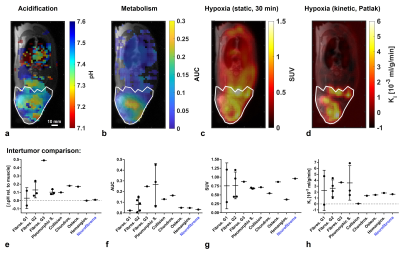 |
Computer Number: 129
1944. Multimodal
imaging of tumor metabolism and microenvironment in feline
sarcoma patients using hyperpolarized 13C MRI and PET
M. Grashei, T. Groll, S. Kahl, S. Baer, E. Bliemsrieder, F.
van Heijster, A. Wendlinger, P. Wodtke, J. Cabello, S.
Notohamiprodjo, C. Lohrmann, M. Schwaiger, W. Weber, K.
Steiger, A. Meyer-Lindenberg, J. Hirschberger, C.
Baumgartner, F. Schilling
Department of Nuclear Medicine, TUM University Hospital, Munich, Germany
Impact: Hyperpolarized 13C
MRI allows sarcoma subtype and grade differentiation in cat
patients in contrast to [18F]FMISO-PET
and DWI. Acidification outperforms all other parameters as
biomarker for cat patient prognosis, rendering
hyperpolarized pH imaging a promising technique for clinical
translation.
|
|
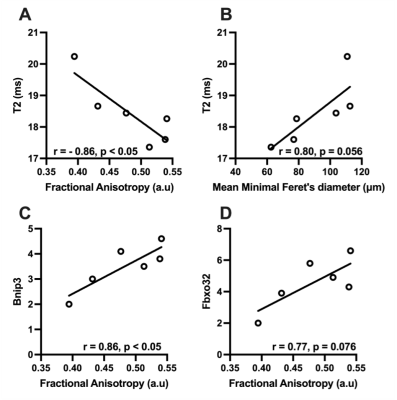 |
Computer Number: 130
1945. Correlation
between MRI parameters and atrophy biomarkers of muscle in a
preclinical model of pancreatic cancer
D. Lee, R. Vohra, Y-N Wang, S. Totten, H. Son, H. Kerr, M.
Campbell, D. Marcinek, J. Garcia
University of Washington, Seattle, United States
Impact: MR measures offer the potential to evaluate
skeletal muscle fiber atrophy in preclinical models of
pancreatic ductal adenocarcinoma and more impotantly these
results can be translated to patients with cancer cachexia
|
|
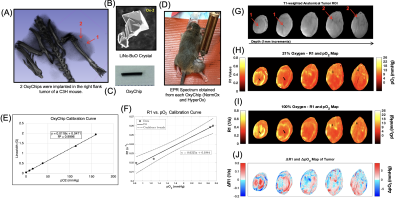 |
Computer Number: 131
1946. Quantitative
MRI Oximetry: Combining EPR and OE-MRI for Volumetric Mapping of
Hypoxia in Tumors
C. Ubert, V. Kassey, M. Kmiec, P. Kuppusamy
Dartmouth College, Hanover, United States
Impact: This study investigates a calibration method,
which could act as a quality assessment tool for the hypoxia
maps generated using OE-MRI, potentially improving
personalized cancer treatments.
|
|
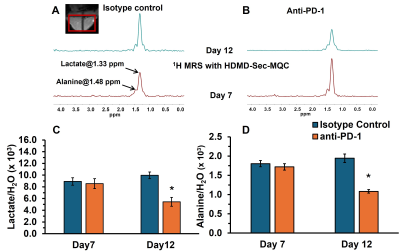 |
Computer Number: 132
1947. Metabolic
and Functional Imaging Biomarkers of Response to Immunotherapy
in Melanoma
P. K. Gupta, S. Orlovskiy, F. Arias-Mendoza, S. Nova, D.
Nelson, S. Pickup, M. Farwell, K. Nath
Perelman School of Medicine, University of Pennsylvania, Philadelphia, United States
Impact: This study emphasizes the potential of early
subcellular changes (metabolism, pH, bioenergetics,
diffusion, T2 relaxation) as predictive biomarkers of
melanoma immunotherapy response. Preliminary findings with
metabolic modulators indicate possible strategies for
enhancing treatment outcomes through metabolic modulation.
|
|
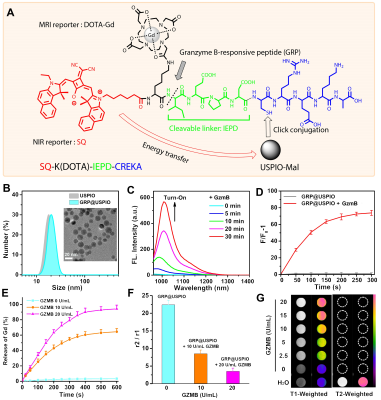 |
Computer Number: 133
1948. Early
Monitoring of Immunotherapy Efficacy in Triple-Negative Breast
Cancer by Granzyme B-Responsive MR/NIR Fluorescence Imaging
D. Yao, Y. Chen, D. Wang
Xinhua Hospital, Shanghai Jiao Tong University School of Medicine, Shanghai, China
Impact: Early prediction of the efficacy of
immunotherapy is of great significance for optimizing the
treatment plan in time and avoiding overtreatment of
patients with low response.
|
|
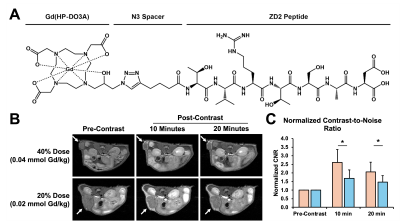 |
Computer Number: 134
1949. Magnetic
Resonance Molecular Imaging of Patient-Derived Xenografts with
MT218
R. Hall, Z-R Lu
Case Western Reserve University, Cleveland, United States
Impact: We demonstrate that MT218 can effectively
enhance patient-derived xenograft tumors of triple negative
breast cancer, a clinically relevant tumor model, further
supporting the clinical translation of MT218 for magnetic
resonance molecular imaging of cancer.
|
|
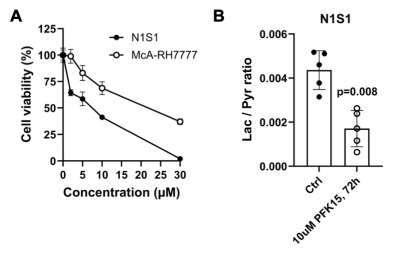 |
Computer Number: 135
1950. In
vitro Hyperpolarized 13C-Pyruvate NMR Spectroscopy for the
Assessment of Treatment Response in Different Hepatocellular
Carcinoma Subtypes
Q. Dou, S. Mirrione, K. Dos Santos, Y-F Yen, L. Tsai
Athinoula A. Martinos Center for Biomedical Imaging, Harvard Medical School, Charlestown, United States
Impact: Cancer cells undergo extensive metabolic
reprogramming to support rapid proliferation, survival, and
treatment resistance. 13C NMR spectroscopy can rapidly
provide valuable insight into cellular metabolism and
therapeutic efficacy, potentially enabling clinicians to
provide more personalized cancer care.
|
|
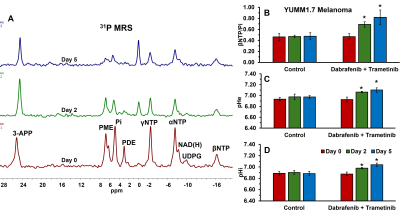 |
Computer Number: 136
1951. Metabolic
Biomarkers of Therapeutic Response in YUMM1.7 Melanoma Targeting
BRAF and MEK Inhibition
P. K. Gupta, L. Li, S. Nova, S. Orlovskiy, D. Nelson, F.
Arias-Mendoza, M. Farwell, K. Nath
Perelman School of Medicine, University of Pennsylvania, Philadelphia, United States
Impact: This study shows that combining dabrafenib and
trametinib may block the overactive BRAF and MEK proteins.
Variations in critical metabolites (lactate and alanine),
bioenergetics, NADH, and pH may explain differential
therapeutic responses in YUMM1.7 melanoma models.
|
|
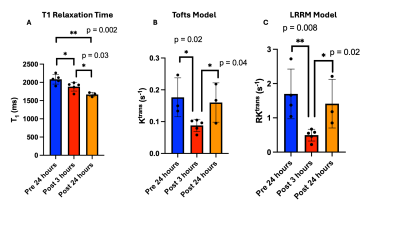 |
Computer Number: 137
1952. Quantitative
DCE MRI of vascular perfusion in preclinical breast
cancer:Comparative analysis of LRRM and Tofts models
C. Dhakan, A. Khaled, C. Macaskill, J. De La Cerda, F. W.
Schuler, C. Flask, M. Pagel
MD Anderson Cancer Center, Houston, United States
Impact: These findings demonstrate the effectiveness of
the LRRM for evaluating DCE MRI when monitoring vascular
changes induced by VDAs in tumors. Future studies may
explore the use of LRRM for DCE MRI to evaluate other
anti-cancer treatments.
|
|
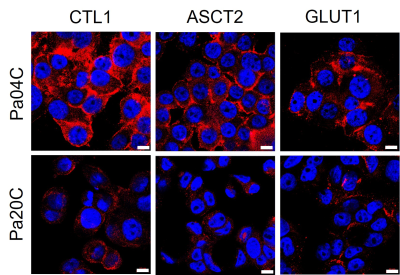 |
Computer Number: 138
1953. Metabolotheranostics
of metabolites identified by 1H MRS achieved by targeting major
metabolic transporters with photoimmunotherapy
P. Khandelwal, J. Jin, R. K. Sharma, J. D. Barnett, M-F
Penet, Y. Mironchik, B. Krishnamachary, H. Kobayashi, Z. M.
Bhujwalla
Johns Hopkins University, Baltimore, United States
Impact: Since choline, glutamine, and glucose are
dysregulated in most cancers, our studies can significantly
expand the scope of targeted cancer treatments that do not
express cell surface targets for antibody-drug conjugates or
radiotheranostics for systemic therapies.
|
|
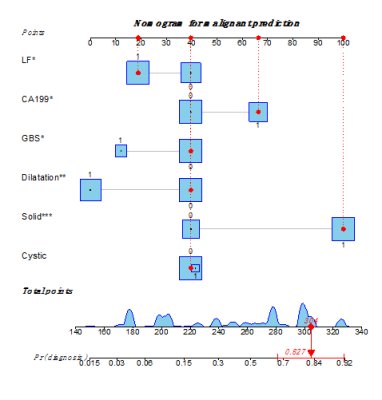 |
Computer Number: 139
1954. Development
of a Scoring System for Predicting the Benign-Malignant Degree
of IPNB Based on Imaging Features and Clinical Indicators
J. Chu, Y. Zhao, W. Xiao, Z. Zhang, J. Zhang, L. Han
The First Affiliated Hospital, Zhejiang University School of Medicine, Hangzhou, China
Impact: The scoring system demonstrates high sensitivity
and specificity in predicting IPNB malignancy. This scoring
system, based on clinical data and imaging features, enables
early IPNB screening and surgical planning.
|
|
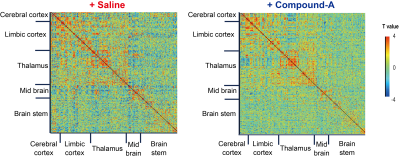 |
Computer Number: 140
1955. Resting-state
fMRI analyses of a pain state transition induced by a chemokine
signal-regulating agent in tumor model mice
S. Yoshinaga, T. Shinjo, Y. Kawachi, Y. Terashima, E. Toda,
K. Matsushima, T. Tsurugizawa, H. Terasawa
Kumamoto University, Kumamoto, Japan
Impact: The pain state transition induced by the
analgesic agent in the tumor-bearing mouse brain was
characterized by resting-state fMRI. Our experimental system
is useful for the evaluation of new analgesic candidates in
nonclinical and, expectantly, clinical studies.
|
|
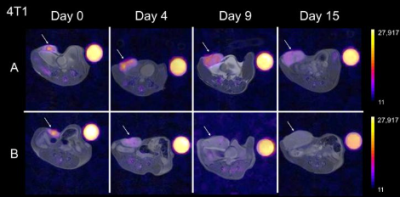 |
Computer Number: 141
1956. 19F
MRI To Monitor Cancer Progression Post-immunotherapy and
Radiation Therapy
E. Qi, H. Yang, B. Howerton, F. Chapelin
UC San Diego, San Diego, United States
Impact: 19F MRI enables noninvasive monitoring of
macrophage dynamics during radiation therapy and
immunotherapy treatments, as well as anticipate tumor
growth. This approach will be invaluable for future research
on the role of inflammation in tumor response to therapy and
recurrence.
|
|
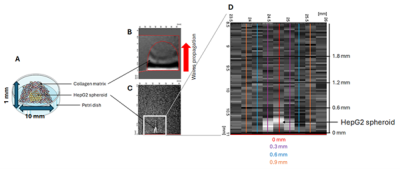 |
Computer Number: 142
1957. Spatial
biomechanics quantification of the Tumoural MicroEnvironment of
a HepG2 spheroids with Magnetic Resonance Elastography
M. Ducamp, A-S Van Schelt, V. Paradis, A. Hammoutene, L.
Aguilera Munoz, A. Beaufrere, A. Boumaza, G. Mangin, M.
Parsons, R. Sinkus
King's College London, London, United Kingdom
Impact: Developing 3D culture model, starting from
patient’s biopsy samples, that is predictive to their in
vivo response to treatment, easily applicable could be
relevant in the field of tailored medicine. This could spare
the patient non-effective chemotherapy exposure or surgery.
|
The International Society for Magnetic Resonance in Medicine is accredited by the Accreditation Council for Continuing Medical Education to provide continuing medical education for physicians.